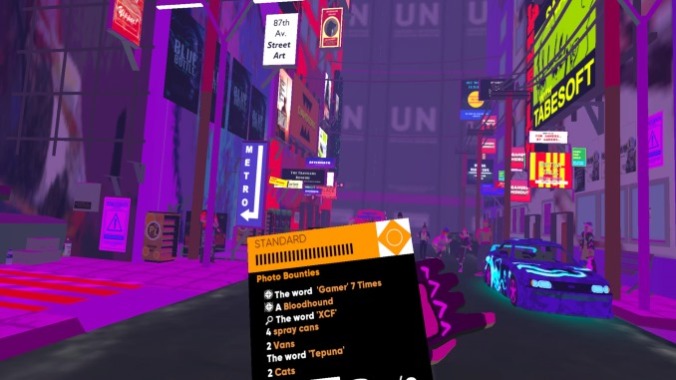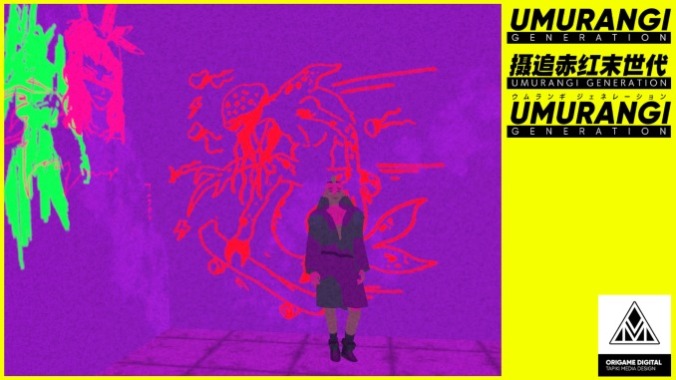Umurangi Generation VR: A Modern Classic from a New Perspective

For all the magic that virtual reality has promised to offer, I’ve rarely had more fun than dancing to the beat of Umurangi Generation‘s soundtrack while painting a shitty drawing on a fake wall. The VR rendition of the 2020 photography game, perhaps unconditionally, elevates the original’s philosophy. The world is crumbling around you. Procrastinating on your tasks to embrace your creative self is not only tempting. It’s imperative.
Released on April 18 for PlayStation VR2 and Meta Quest devices, Umurangi Generation VR reimagines the first person photography sandbox to be played with a headset strapped to your face. If you haven’t heard about Umurangi (which was one of Paste’s five favorite games of 2020), it takes place in Tauranga Aotearoa, a region in New Zealand. It shares a tale about Ngāi Te Rangi, and a depiction of the Māori, both of which you should learn more about before diving in. (Dan Taipua’s review over at The Spinoff is still a great starting point.)
I reviewed the original back in 2020, and found it to be beautifully bleak. At its core, you’re a photographer who’s slowly documenting a doomed world that gradually gets worse. This is done by visiting set scenarios with a list of objectives—photograph seven birds in one shot, find specific curios around and take a picture of them, and so on. Over time you gain access to different lenses, photo editing effects, and some gadgets for traversal purposes. Umurangi Generation VR also includes the Macro DLC, which adds levels and a few features like the spray can.

The experience itself remains largely the same. There’s a different main menu that lets you goof around with your VR arms and take on a tutorial if you need to, and then you’re off to the base levels. If you look at your left wrist, you’ll get the list of objectives from a watch. Around your waist are the camera, painting tools, and of course, an MP3 player. The timer from the original is gone, too, so there’s no pressure to finish your tasks. (A feature I didn’t enjoy, mind, but that was thematically interesting by accident.)
The novelty of VR didn’t take long to set in. At first, I was taking pictures with the camera from afar, which is undoubtedly underwhelming, until I had the reflex of leaning toward the viewfinder with my head. Once you do, the view changes to first perspective, and you can aim freely as you’d do in real life. I never felt limited in the way I wanted to set a specific angle. If I wanted a vertical shot, for example, I just moved my wrist until I had the right frame.
As I mentioned, things begin to shine when you ignore the objective and try to push the limits of VR (which is true for most VR games, really), especially since I remembered how to solve most photography tasks already. The spray can from Macro feels great to hold and even better to vandalize stuff with. There’s some trial and error involved while figuring out what you can paint over, as not everything is eligible, but the feeling is immediately gratifying. So is shaking the can to “reload” the paint, as the haptics mimic the clink clink clink vibration inside the can as you do. The marker is fun to use, too, and both painting tools have a selection of colors to switch from.
